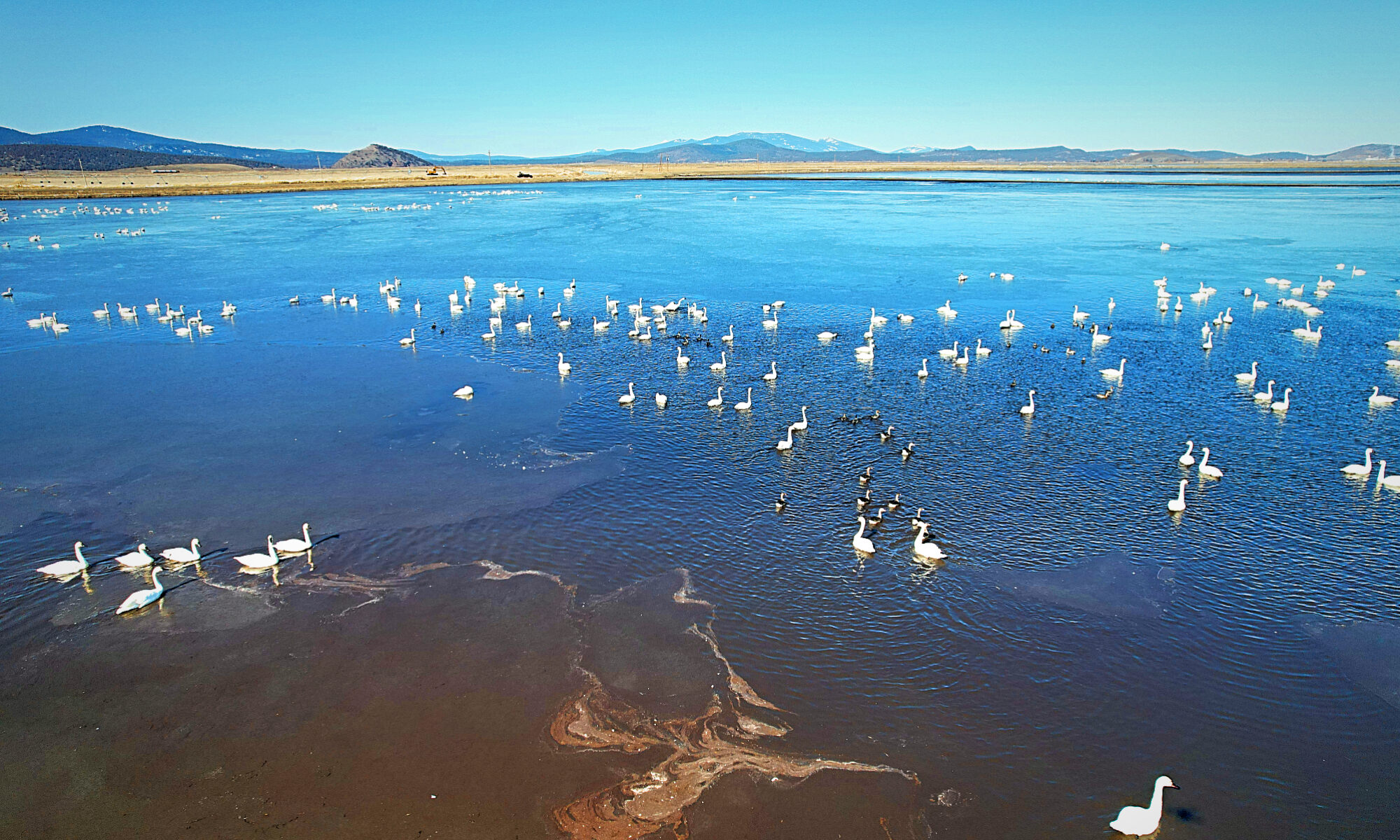Recently, the Oregonian published a letter from Mary Hayden of Oregon City about the conditions of the Tule Lake Wildlife Refuge and the potential avian botulism outbreak on the scale of 2020. In her letter, Ms. Hayden offered her thoughts on a solution – “cash out the farmers” and “give the water to the birds.”
Unfortunately, when it comes to Klamath Basin water issues, this is a popular, short-sighted reaction by those whose communities are not dependent upon Klamath ag.

This way of thinking also doesn’t take into account the work and advocacy Klamath Basin family farmers and ranchers do on behalf of the birds of the Pacific Flyway or area wildlife. Nor does it appreciate the tangled political web of the power of the Federal government, the Endangered Species Act, or water rights that put these refuges last in line and create “paper droughts” affecting farmers and waterfowl alike.
The notion that Klamath ag is “watering the desert” while advocating for sending water to area refuges shows there’s a misunderstanding about the hydrology of the Klamath Basin. Before settlers came to the area, water flowed throughout the Klamath Basin and settled in low-lying areas creating a vast network of shallow lakes and marshlands between Tule Lake and Lower Klamath Lake. The first people of this area, the Modocs, hunted, fished, and gathered food in these marshlands and lakes.
When the Klamath Project was created, many of those areas were converted to rich farmland.
In our district, the Klamath Drainage District (KDD), 27,000 acres of marshland was converted to farmland, leaving over 80,000 acres of the original Lower Klamath Lake as the nation’s first waterfowl refuge. During spring and fall migration, our district provides habitat and food for birds traveling the Pacific Flyway.

KDD has also been a partner with Lower Klamath National Wildlife Refuge, sending much-needed water from the district to the refuge when other stakeholders and the Bureau of Reclamation refused to send water to these wetlands. KDD has worked with conservation groups such as Ducks Unlimited and California Waterfowl on habitat restoration efforts as well as getting water to Lower Klamath.
KDD and the Klamath Water Users Association (KWUA) have been vocal supporters of the Klamath Basin Refuges, with KWUA sending a letter to the Bureau of Reclamation urging the Bureau to send water to the refuges to head off the impending avian botulism outbreak.
Even today, Tulelake Irrigation District and the Klamath Drainage District are working on plans that not only provide water to these historic refuges, but also send cleaner, cooler water down the Klamath River for salmon.

Regardless if Klamath Basin ag were cashed out at a fair price, this one-time payout would devastate our communities and the very people working diligently to preserve the refuges that includes a sustainable supply of water. Every dollar created by Klamath ag is passed through the community nine times, more than any other industry in our region. Thousands of workers would be unemployed, and businesses tangentially connected to agriculture would fold.
We haven’t even touched on the nation’s challenges surrounding the loss of farmland and farmers and its effects on national food security.
KDD and Klamath Basin family farmers and ranchers are allies to our refuges, not enemies. While it’s easier to demonize Klamath ag than to appreciate it, we recognize our future is directly tied to the Klamath Basin ecosystem. If Ms. Hayden is interested, we’d love for her to pay a visit to our district to learn more about the incredible work we and our partners are doing on behalf of the Lower Klamath National Wildlife Refuge.

